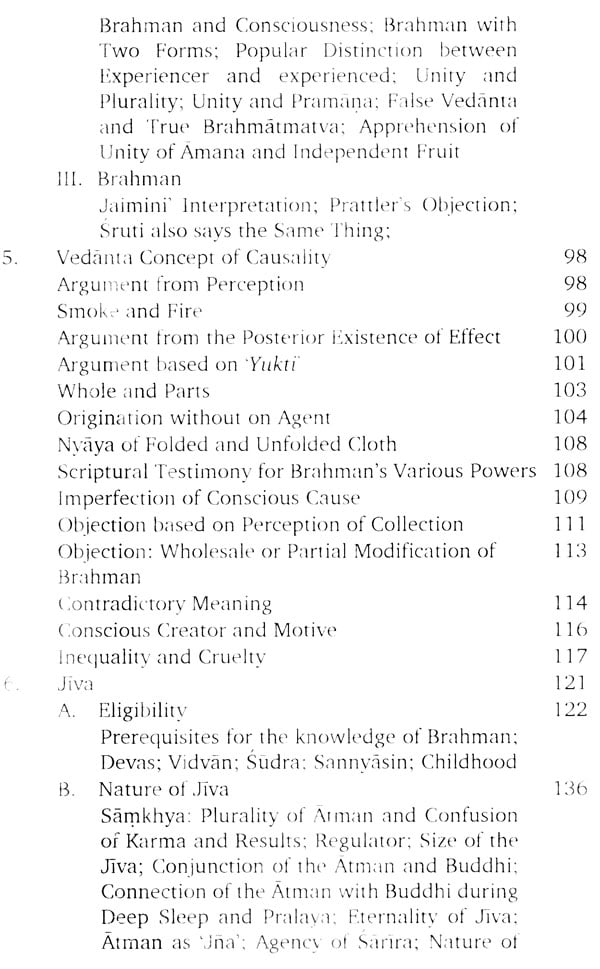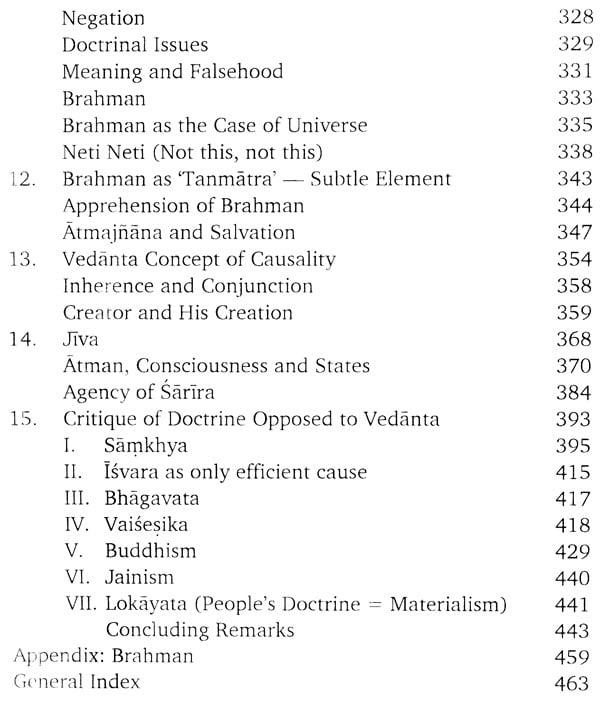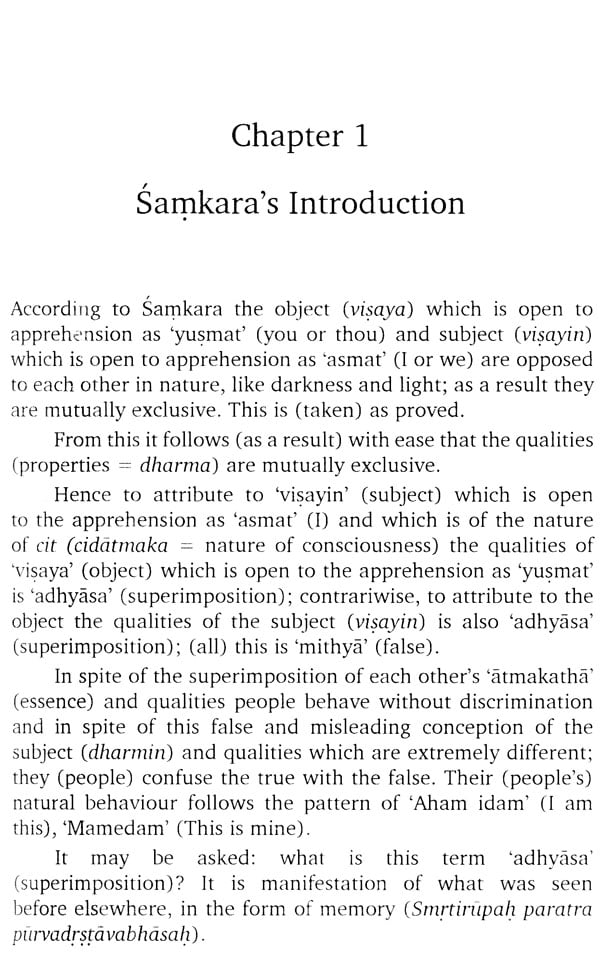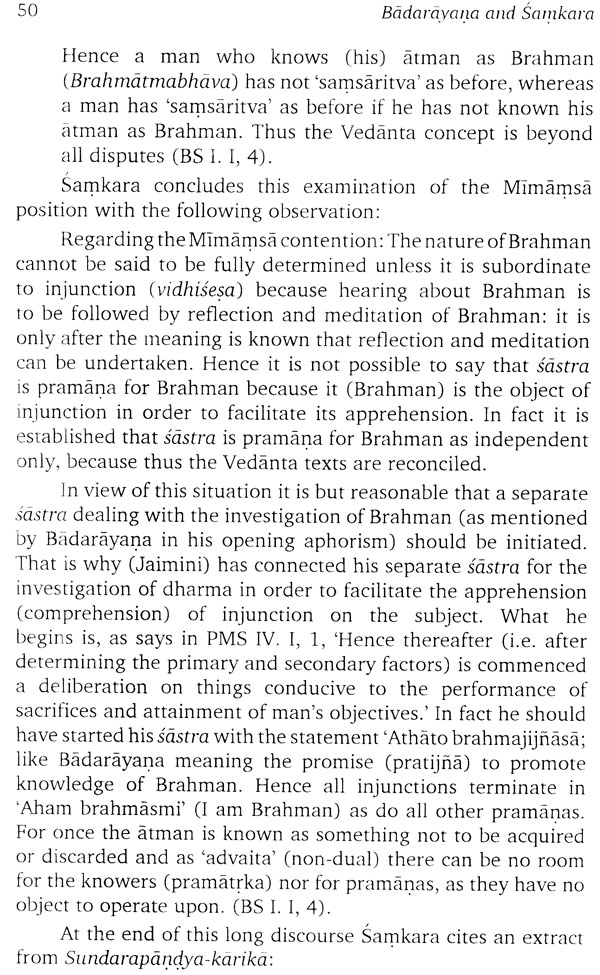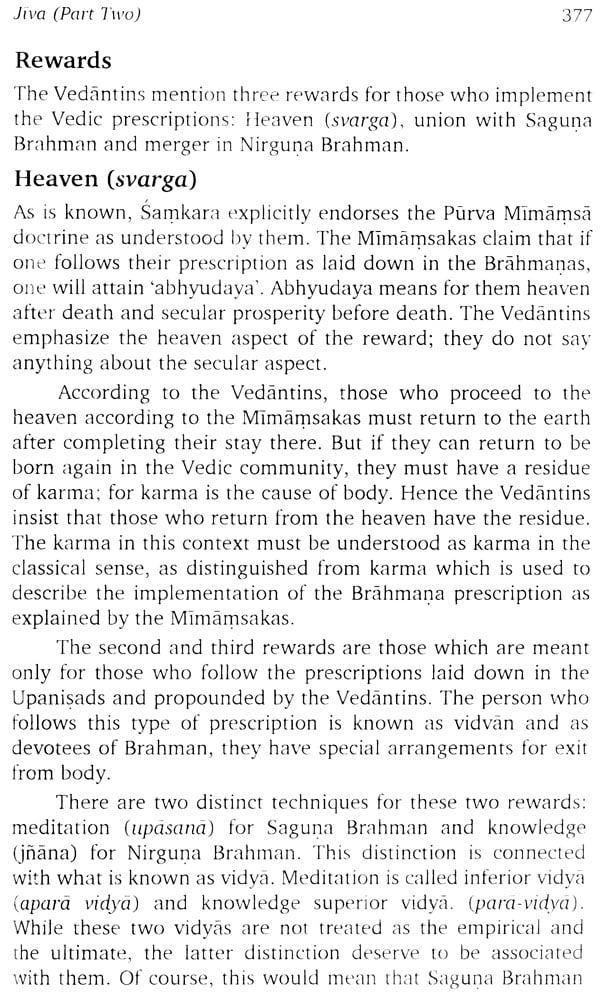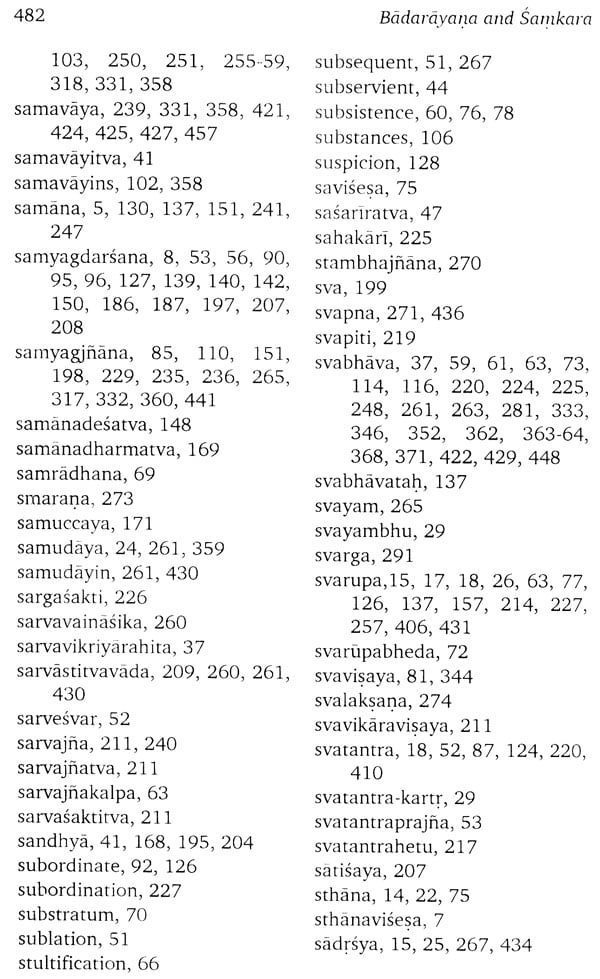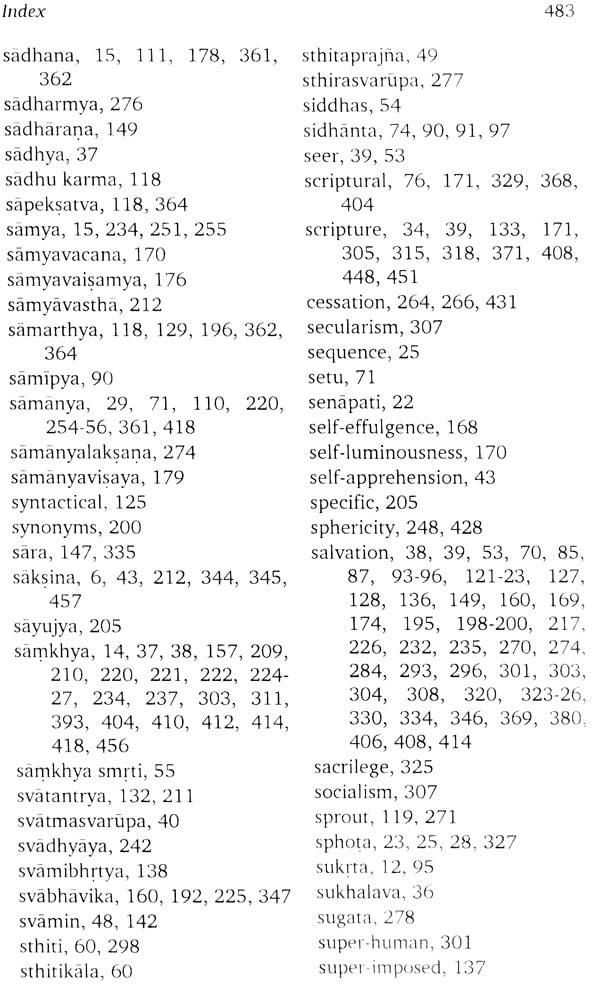
Badarayana & Samkara- What is Their Vedanta
Book Specification
| Item Code: | NAY504 |
| Author: | N.S. Junankar |
| Publisher: | Motilal Banarsidass Publications, Delhi |
| Language: | English |
| Edition: | 2020 |
| ISBN: | 9788194815884 |
| Pages: | 504 |
| Cover: | PAPERBACK |
| Other Details | 8.50 X 5.50 inch |
| Weight | 590 gm |
Book Description
This conceptual framework is largely based on Vedanta and its prototype is undoubtedly the Vedanta of Samkara. In order to see this prototype in its native hue, it is necessary to abandon the disciplinary approach whereby certain aspects are dealt with -religion, philosophy, sociology, etc.
For instance, we do not know anything about Badaryana, except the period during which he may have lived; he is supposed to have lived during the second century B.C. The Brahma Sutra of Badarayana is the ‘locus classicus’ of the Upanisadic system known as Vedanta and it acquired the prestige and authority amongst the intelligentsia from the time of Samskara.
In 1936 he was awarded a D.Phil. (Oxon) for his thesis "The Conceptions of Time, Space and Motion in early Indian Philosophy".
Over the years he played an important role in India’s contribution to UNSCO, including representing India in many international conferences as a delegate, and Secretary General for the Eighth General Conference in 1954. He was posted as Education Adviser to the High Commissioner for India in London (1960-64). On retiring from the Ministry of Education, he was awarded a Leverhulme Senior Fellowship the School of Oriental and African Studies, University London (1965-70).
Indian and western Indologists gave a philosophical turn to Indian speculations and ignored the theological aspects which would require a comparison with biblical theology. But the characterization of Vedanta as the philosophy of India, par excellence, by Deussen towards the end of the last century lost sight of the new fashions in western philosophy. The age of absolutism represented by Hegel and Bradley had almost given way to piecemeal philosophizing but the doctrine of Brahman and Maya seems to be harking back to the age which had ceased in the west. It is not therefore surprising that Vedanta received but scant attention in the western philosophical establishment. In more recent times the magical, spiritual, mystical aspects have come to dominate the western reaction to things oriental and, in this atmosphere, Indian intelligentsia has taken special pride.
During this period, the Indian intelligentsia and the devotees of Indian freedom have adopted, with occasional protests, modern science, technology and conceptual framework from the west and combined this wholesale adoption with what can best be described as 'liberation theology' if not 'liberation philosophy'. But, in this process, the foundations of the traditional conceptual framework, although furbished with modem techniques of investigation, has remained almost intact. In fact, the emphasis on cultural diversity has become very handy in this process of conservation.
This conceptual framework is largely based on Vedanta and its prototype is undoubtedly the Vedanta of Samkara. In order to see this prototype in its native hue. It is necessary to abandon the disciplinary approach whereby certain aspects are dealt with - religion, philosophy, sociology, etc. This task is not easy because we do not have hard facts about the architects of this framework, e.g. personal, educational, social background. Frequently, we do not know even when they lived, why they took to such pursuits, whom they met or had discussions with. For instance, we do not know anything about Badarayana, except the period during which he may have lived; he is supposed to have lived during the second century B. C. The Brahma Sierra of Badarayana is the 'locus classicus' of the Upanisadic system known as Vedanta and it acquired the prestige and authority amongst the intelligentsia from the time of Samkara, All that we know about Samkara can be summarized in the following words: Gaudapada wrote a commentary on Mandiikya Upanishad, called Mind).sukya Karika and his disciple was Govinda who was the teacher of Samkara. He comes from modem Kerala and is said to have lived from A.D. 788 to 822.
During this short life of thirty-two years, he not only mastered the Sanskrit language and absorbed the Vedic heritage but also the basic doctrines of the main systems of Indian philosophy.
Book's Contents and Sample Pages

